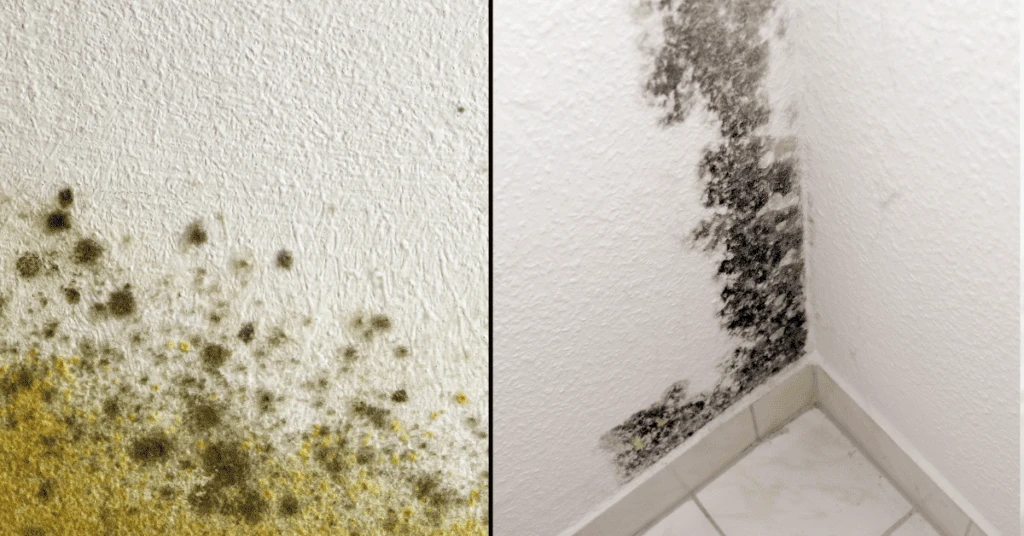People often confuse mold and mildew which isn’t a surprise because they actually have a lot in common! In fact, did you know mildew is actually a particular type of mold?
But although both mold and mildew are fungi that grow in moist environments, they have some key differences. Knowing how to properly differentiate and identify mold and mildew is an important step so you know how to safely eliminate them.
Ready to find out more about five biggest differences between mold and mildew? Read on to learn more!
DIFFERENCE #1:
Mold looks slimy or fuzzy, while mildew is powdery
If you’re just taking a quick glance, one key difference between mold and mildew is its visual appearance. Mold will show up looking slimy or fuzzy. On the other hand, mildew is powdery. Mildew will also have a vague musty smell, whereas mold will have a stronger, more pungent odor because it produces microbial volatile organic compounds, aka MVOCs.
DIFFERENCE #2:
Mildew grows only on the surface, mold burrows beneath it
Both mold and mildew occur on natural materials like wood, paper or leather. At home, they’re both most likely to grow in areas that hold moisture and/or high humidity like bathrooms, kitchens, basements and anywhere with water damage.
However, mildew grows only on the surface. On the other hand, mold burrows and grows beneath the surface, making it much harder to completely remove.
DIFFERENCE #3:
MOLD CAUSES SEVERE HEALTH ISSUES, MILDEW DOESN’T
You don’t want to let mildew or mold linger, but especially mold as it can cause serious health problems if left unchecked. Symptoms of mold exposure may include headache, sore throat, runny nose, coughing, sneezing, itching, wheezing, difficulty breathing, watery eyes and fatigue. In those with asthma, asthma attacks can occur. In those with impaired immune systems, serious infection can occur. Long term exposure can cause issues with concentration, judgement and memory loss.
DIFFERENCE #4:
Mold IS GREEN/RED/BLACK, MILDEW IS WHITE/GRAY/BROWN
As with the texture of mold and mildew that was mentioned previously, the color of mold is also different from the color of mildew. Mold shows up as green, red or black whereas mildew starts out white or grayish and gradually turns brown over time.
DIFFERENCE #5:
MILDEW CAN BE REMOVED WITH HOUSEHOLD PRODUCTS, MOLD NEEDS PROFESSIONAL REMOVAL
One of the most important differences between mold and mildew is how they’re each remove. Standard household cleaning products work just fine on mildew, since it only exists on the surface. But because mold grows beneath the surface, it requires professional remediation to completely (and safely) eliminate it.
WHAT TO DO IF YOU HAVE MOLD:
If mold has been discovered in your residential or commercial property, reach out to us for a complimentary quote – you need a specialized contractor who has the experience and workforce to handle the job!
At C&C Unlimited, we pride ourselves on completing projects safely, on time, on budget and within scope.

